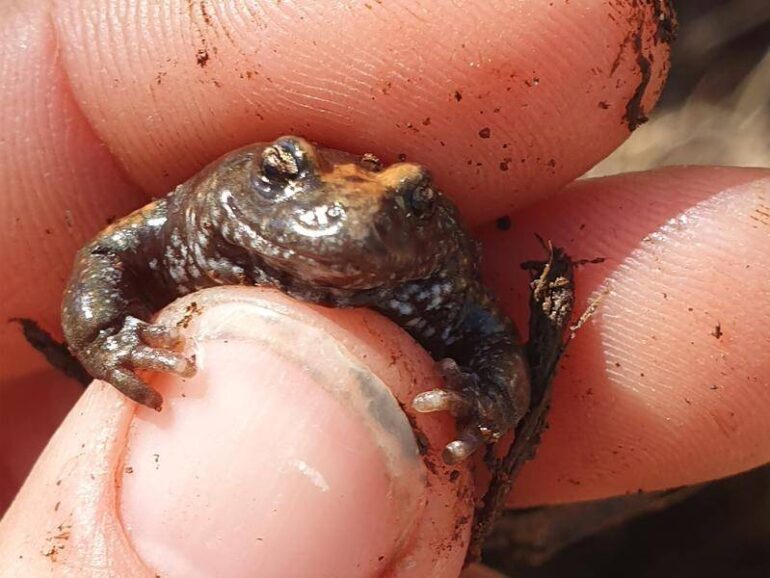TL;DR:
- Indigenous rangers collaborate with scientists to find a new frog species in remote APY Lands.
- The toadlet, from the Pseudophryne genus, is so new it lacks a formal name.
- Challenges include a tiny known habitat and an arid climate.
- DNA samples indicate it’s an undescribed species.
- Acoustic monitors and machine learning technology aid in data collection.
- Preservation efforts involve the Anangu community and its cultural knowledge.
- If confirmed, the Anangu community will name the new species.
Main AI News:
Anangu Pitjantjatjara Yankunytjatjara (APY) Lands, nestled in the remote expanse of far northwest South Australia, are witnessing a remarkable collaboration between Aboriginal rangers and scientists. Their mission was to unearth a minuscule toadlet believed to be a potential addition to Australia’s diverse frog species roster. This enigmatic frog, hailing from the Pseudophryne genus, remains so new that it lacks a formal taxonomic identity, a fact discovered by an ecologist back in 2012.
This endeavor, aptly named “Nganngi Kanyini,” carries profound significance in the Pitjantjatjara language, where ‘Nganngi’ translates to frog, and ‘kanyini’ embodies the principles of interconnectedness, nurturing, and support. The project, however, comes with its set of challenges. The toadlet’s known habitat is a minute one-square-meter area surrounding a spring, further complicated by the arid climate of the region.
Kieran Jairath, the coordinator of APY rangers, elucidates, “This frog has only been located in this one spring, in an area about one meter by one meter. The aquifer that feeds the spring may provide more habitat, as the frog can burrow into the moist soil that continues underground.”
To unlock the mysteries surrounding this elusive amphibian, the Anangu rangers have partnered with ecologists, APY Land Management, and Zoos SA. By collecting DNA samples from tadpole tails found in the spring, they have tentatively concluded that this species is yet to be documented in scientific literature. DNA matching with an older sample from a site 30 kilometers away in Western Australia hints at the possibility of a new species.
To shed more light on this frog’s existence and range, the rangers are deploying low-cost acoustic monitors. These devices will record the sounds of the creatures inhabiting the vicinity, including the elusive nganngi. The sheer volume of data generated, with monitors active for days or weeks, necessitates a technological solution. Dr. Kyle Armstrong from the University of Adelaide is spearheading the development of machine learning software and hardware capable of analyzing and identifying the nganngi’s distinctive call, all in real-time.
While technology plays a vital role in data acquisition, the heart of this undertaking remains the Anangu ranger team and their close-knit community. Dr. Steve Donnellan, an honorary researcher at the South Australian Museum, emphasizes the historical importance of preserving these frogs: “They’ve been isolated from their cousins in wetter environments for two million years. They’re hanging on by their toenails, no other species can replace them if they are lost because of their geographic isolation.”
This multi-generational project integrates the community’s knowledge and values, with school students incorporating it into their science curriculum and elders imparting their cultural and traditional ecological wisdom. And, should DNA confirm the toadlets as a new species, the Anangu will have the privilege of bestowing a name upon this unique amphibian, marking a profound connection between science and indigenous culture.
Conclusion:
The discovery of a potentially new frog species through innovative AI-assisted efforts highlights the intersection of indigenous knowledge and modern technology in ecological research. This could lead to increased awareness of biodiversity and conservation efforts, presenting opportunities for eco-tourism, scientific collaboration, and potential pharmaceutical discoveries in the market.

